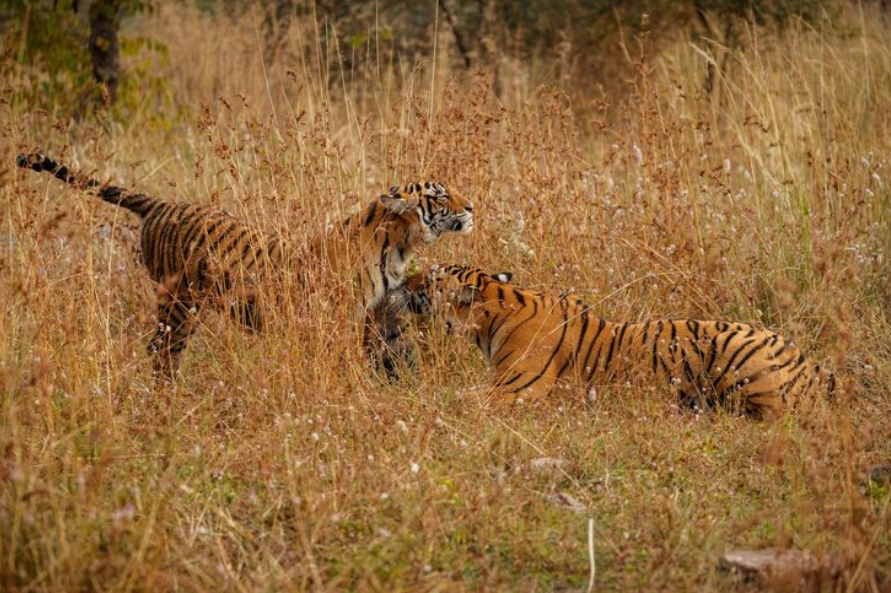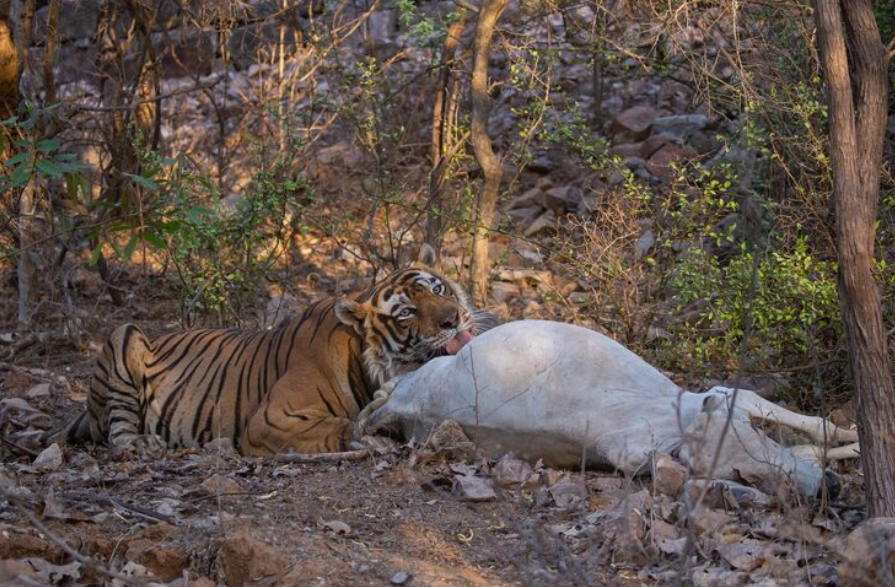Blog
Bengal Tiger vs Siberian Tiger: A Fierce and Fascinating Showdown

Among all the big cats in the world, the Bengal and Siberian tigers are the most powerful and captivating. Both species represent the pinnacle of strength, adaptability, and majesty in the wild. While they share common ancestry and classification as Panthera tigris, they differ significantly in their habitat, size, behavior, and survival status. Understanding these differences is not just a matter of zoological interest but is also essential for conservation efforts. Their comparison offers insight into how evolution and environment shape the features and behavior of apex predators.
Origins and Distribution
The Bengal tiger, also known as Panthera tigris tigris, is primarily found in the Indian subcontinent. This includes India, Bangladesh, Nepal, and Bhutan. It is the most numerous of all tiger subspecies, thanks largely to focused conservation efforts in India through initiatives like Project Tiger. These tigers are commonly associated with grasslands, tropical forests, and mangrove swamps like the Sundarbans.
The Siberian tiger, also known as Panthera tigris altaica, inhabits the Russian Far East, with small populations found in northeast China and possibly North Korea. It is adapted to colder climates and lives primarily in the boreal forests, also known as taigas. Once widespread across eastern Russia, their numbers and range shrank dramatically due to poaching and habitat destruction. Today, they’re mostly restricted to the Sikhote-Alin mountain region.
Physical Appearance and Size
The Siberian tiger holds the crown as the largest tiger subspecies in the world. A full-grown male can measure up to 12 feet in length, including the tail, and weigh between 400 to 700 pounds. Their large size helps them retain heat in freezing temperatures. They have a thick coat with a paler orange hue, broad paws, and a layer of fat underneath their skin for insulation.
Bengal tigers are slightly smaller but still massive in comparison to other big cats. Adult males typically weigh between 400 and 570 pounds and measure about 10 to 11 feet in length. Their fur is a more vibrant orange with distinct black stripes, which provide camouflage in the dense vegetation of the Indian forests. The contrast in fur color and density clearly reflects the climatic demands of their respective environments.
Behavioral Traits
Bengal tigers are solitary but territorial animals. They prefer to stay within their marked territories unless driven out by stronger males or adverse conditions. They are mostly nocturnal and excellent swimmers, often seen cooling off in rivers and lakes. Their behavior also includes scent marking, roaring, and tree scratching to assert dominance or attract mates.
Siberian tigers are more elusive and less territorial, mostly due to the lower population density in their native range. They cover larger territories that can span over 1000 square kilometers, far larger than those of Bengal tigers. Unlike Bengal tigers, they tend to be more diurnal and can be active during daylight, mainly because their prey is also active during the day. Siberian tigers are highly adaptive hunters and very stealthy, relying heavily on their surroundings for camouflage.
Diet and Hunting Strategy
The Bengal tiger primarily hunts large ungulates such as deer (sambar, chital), wild boar, and even occasionally young elephants or rhinoceroses. Their hunting method involves stealth, stalking, and then a quick burst of speed to knock the prey off balance and deliver a fatal bite to the neck or throat. They are known to consume about 60 to 90 pounds of meat in a single meal.
The Siberian tiger’s diet is somewhat similar but adjusted to the fauna of its region. It preys mainly on wild boar, red deer, moose, and occasionally bears. The scarcity of prey in their range forces them to travel long distances to hunt. Siberian tigers also eat more in a single sitting, sometimes up to 100 pounds of meat, to compensate for long gaps between meals.
Adaptation to Climate
One of the most striking differences between the two is their adaptation to climate. The Siberian tiger lives in extreme cold, with temperatures dropping below -40°C. Their fur is longer and denser, and they have a thick fat layer under their skin. Their paws are broader and more padded, helping them walk on snow without sinking.
In contrast, the Bengal tiger is adapted to hot, humid climates. Its coat is shorter, and its body is leaner, better suited for movement through the forest. While it doesn’t have the insulating fat or thick fur of its northern cousin, it uses water bodies for thermoregulation and is known for its love of swimming.
Reproduction and Cub Rearing
Bengal tigers have a gestation period of about 104 to 106 days and usually give birth to litters of 2 to 4 cubs. The cubs stay with their mother for about two years before venturing out on their own. The survival rate of cubs in the wild is heavily influenced by factors like habitat security, availability of prey, and human disturbance.
Siberian tigers have a slightly longer gestation period of around 105 to 110 days, and they typically give birth to 2 or 3 cubs. The harsh conditions of the Russian taiga make survival more difficult, and only about half the cubs reach maturity. The mother raises the cubs alone, hunting and protecting them from predators and harsh weather.
Threats and Conservation
Both species face severe threats, though in different contexts. Bengal tigers are at risk due to habitat loss, human-wildlife conflict, poaching for body parts, and fragmentation of territory. In some areas, tigers are killed for entering human settlements or for livestock predation.
Siberian tigers face similar threats but are also endangered by illegal logging, which destroys their habitats and the prey base. Poaching remains a major concern, despite strong protection laws in Russia. Their sparse population makes them especially vulnerable to genetic bottlenecks and disease outbreaks.
Role in Ecosystem
As apex predators, both Bengal and Siberian tigers play a crucial role in maintaining the balance of their respective ecosystems. They control the population of herbivores, which in turn protects vegetation from overgrazing. Their presence also supports healthy forests, which help in carbon storage and biodiversity conservation. The absence of tigers often signals a degraded and imbalanced ecosystem.
Cultural and Symbolic Importance
In Indian culture, the Bengal tiger is a national symbol. It appears in folklore, religious texts, and even on currency. Revered for its strength and bravery, it symbolizes India’s wildlife heritage. Temples, art, and literature throughout the Indian subcontinent depict tigers as powerful, almost divine beings.
Siberian tigers are less culturally celebrated but hold immense pride in Russia and parts of northeast Asia. In local folklore, they are often considered forest spirits or guardians of nature. Their image is used in conservation campaigns and even sports team mascots, symbolizing strength, endurance, and survival in adversity.
Global Captive Populations
Bengal tigers are more commonly seen in zoos and wildlife parks worldwide due to their higher population and adaptability to captivity. Breeding programs have been relatively successful, and several conservation centers in India, the U.S., and Europe host Bengal tigers.
Siberian tigers are rarer in captivity, and specialized breeding programs are needed to maintain their genetic diversity. They require colder climates and more space, making them less commonly housed in standard zoos. However, efforts by Russian and international organizations continue to sustain captive populations and even reintroduce tigers into the wild.
Genetic and Scientific Research
Genetic studies have revealed key differences between Bengal and Siberian tigers, not just in size and appearance but in DNA structure and immune response. Bengal tigers show higher genetic diversity, which is good for adaptability but makes uniform conservation strategies difficult. Siberian tigers, with fewer individuals, are easier to manage in breeding programs but face challenges of inbreeding.
Ongoing scientific research is also examining their behavior, vocalizations, and stress levels through tracking devices, camera traps, and bio-sampling. Understanding these animals better helps in drafting more effective conservation policies.
Ecotourism and Economic Value

In India, Bengal tigers contribute significantly to ecotourism. National parks like Ranthambore, Bandhavgarh, and Jim Corbett attract thousands of visitors annually. This tourism revenue not only supports local communities but also funds park maintenance and anti-poaching patrols.
Siberian tigers have more limited ecotourism value due to their remote habitat and elusive nature. However, some eco-reserves in Russia now offer controlled wildlife safaris and camera trap experiences, focusing more on education than sightseeing. The global interest in their survival brings funding from international NGOs and wildlife trusts.
Which One Would Win in a Fight?
The age-old debate of who would win in a hypothetical face-off — Bengal vs Siberian — is often popular among wildlife enthusiasts. In sheer size and strength, the Siberian tiger would likely have an advantage. But Bengal tigers are more aggressive and battle-hardened due to their dense population and competition for territory. Realistically, the two would avoid confrontation, but if forced, the outcome would depend on individual circumstances more than subspecies traits.
Final Thoughts
While the Bengal and Siberian tigers differ in many ways, both are majestic examples of evolution’s power and nature’s beauty. They reflect how environment shapes physiology, behavior, and survival strategies. Their protection is not only crucial for biodiversity but also for cultural identity, environmental health, and future generations. As humans, it’s our responsibility to ensure that these creatures continue to roam the forests and taigas — wild, free, and powerful.
-

 Tech1 year ago
Tech1 year agoHow to Use a Temporary Number for WhatsApp
-

 Business2 years ago
Business2 years agoSepatuindonesia.com | Best Online Store in Indonesia
-

 Social Media1 year ago
Social Media1 year agoThe Best Methods to Download TikTok Videos Using SnapTik
-

 Technology1 year ago
Technology1 year agoTop High Paying Affiliate Programs
-

 Tech8 months ago
Tech8 months agoUnderstanding thejavasea.me Leaks Aio-TLP: A Comprehensive Guide
-

 FOOD10 months ago
FOOD10 months agoHow to Identify Pure Desi Ghee? Ultimate Guidelines for Purchasing Authentic Ghee Online
-

 Instagram3 years ago
Instagram3 years agoFree Instagram Auto Follower Without Login
-

 Instagram3 years ago
Instagram3 years agoFree Instagram Follower Without Login


















